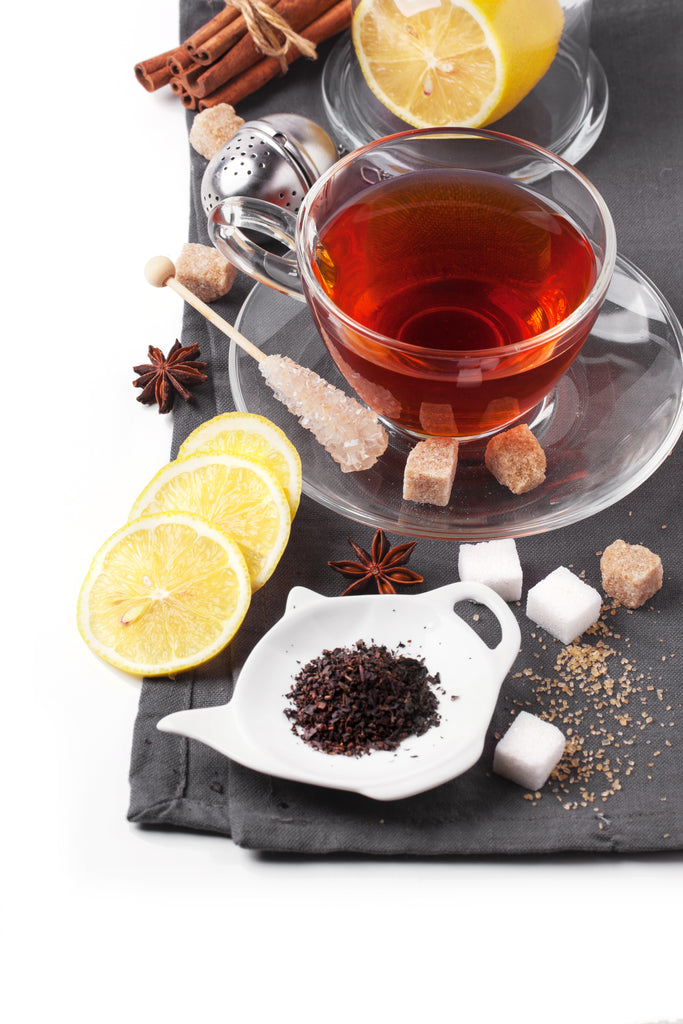Tea - How To
Intro to Brewing Tea

Brewing Tea 101
One of the most frequent questions we have about brewing tea is why doesn't the tea at my house taste the same as it did at my friend's house or at the coffee house?
You take the same leaves, put them in a similar tea infuser, add the freshly boiled water, steep it for the same amount of time, strain the tea or remove the infuser.
This is the basic process around the world, so common sense tells us that it should taste always taste the same.
In fact, tea should taste the same regardless of where it’s prepared, as the procedure it’s the same: you place the loose tea leaves in the teacup or tea infuser, then you pour the freshly boiled water over the leaves and allow the beverage to steep for a few minutes. Last, you remove the infuser or remove the leaves by straining the tea in the serving cup.
However, there are some additional considerations that will change the brew from one location to the next, and it turns out that these are just as important as the tea itself in producing the same exact and perfect cup of tea. You can also alter some of these characteristics to make the perfect cup of tea, just as you like it. But if you want to get the most of your tea, it’s useful to follow the guidelines as given below.
1. Water quality and temperature
Tea is 95% water, so its quality is given not only by due to the specific tea and volume in the cup, but also by the quality of the water you choose. Here’s how to pick the water for a great cup of tea:
- Choose filtered or bottled spring water. Even though distilled sounds like it should be better, it doesn't taste very good. Avoid distilled water, as this has been stripped of all it's natural minerals, and it will leave your tea tasting flat.
- Don't continue to boil your water over and over again before it is used. Empty the pot and start from scratch. Water that has been boiled looses its oxygen value and this gives the tea a better taste. The same concept holds true for wine - it must be aerated to give it the best flavor. Alternatively, use a diffuser like this one that that actually aerates the tea as it is being strained.
- Similarly, avoid over-boiling water as again, it reduces the oxygen content.
- Make sure you adjust the water temperature that you are using to make sure you get the proper brew. Water that is too hot can burn some teas and water that isn't hot enough simply won't give you a lot of efficiency.
Here's a basic list of what goes into a great cup of tea
|
Tea type |
Amount of leaves |
Water’s temperature |
Steeping time |
|
White tea |
1-2 teaspoons |
149-158°F (65-70°C) |
3 minutes |
|
Yellow tea |
1-2 teaspoons |
158-167°F (70-75°C) |
3 minutes |
|
Green tea |
1-2 teaspoons |
167-176°F (75-80°C) |
3 minutes |
|
Oolong tea |
1-2 teaspoons |
176-185°F (80-85°C) |
3-5 minutes |
|
Black tea |
1 teaspoon |
194-210°F (90-99°C) |
2-5 minutes |
|
Pu-erh tea |
1 teaspoon |
203-212°F (95-100°C) |
2-5 minutes |
|
Tisanes (Herbal teas) |
1-2 teaspoons |
210°F (99°C) |
Depends on the kind of herbal tea |
As you can see above, the proper temperature can vary greatly depending on which tea you are steeping, and this is mainly because teas have different oxidation periods. Green tea and white tea for example have little to no oxidation periods, so they need to be brewed at lower temperatures, while the tea types with longer oxidation periods – such as black or pu'erh tea – need to be brewed at higher temperatures, so that the large molecules of phenols can be properly extracted.
If you’re using too hot water for white or green tea, you’ll notice the taste is bitter than it should be [burned], and of course this makes a huge difference in the taste. And again, if the water you pour over black tea leaves is not hot enough, you may not be getting the best of your cup of tea. It will be watery and lackluster.
Of late, there are a number of pots that are being sold that heat to these very specific temperatures and can even be set to hold at the temperature so that you aren't constantly testing temperature.
Also, be sure [especially if you are pouring into a heavy ceramic mug, that you preheat the mug with hot water. Otherwise, pouring your boiled water into a cold mug may end up dropping the water temperature down to unacceptable levels, almost immediately.
2. The amount of loose tea leaves
When preparing tea, we’re tempted to let it steep for longer for obtaining a stronger taste, but the general rule says you should add more leaves, not extend the brewing time, as this may lead to a bitter taste. Also, keep in mind that tea leaves expand so it’s preferable for them to move freely inside the brewing pot, as this way more flavor will be extracted. This of course cannot happen with tea bags.
The usual amount of tea used per cup of water (7-8 oz. or 200-240 ml) is one slightly heaped teaspoon, so about 2 grams of leaves. However, for teas with larger leaves, such as white for example, you can use an extra teaspoon, but only after trying the standard recommendation, as you may prefer the lighter tea.
3. The steeping time
The third factor to consider when preparing your tea is the steeping time. Generally, white, yellow and green tea are steeped for 2 to 3 minutes, while stronger teas, like black, oolong or pu-erh tea are steeped for 3 to 7 minutes, depending on the type of tea you prepare. The table above gives you some general guidelines on steeping as well.
An interesting fact that’s worth being mentioned here is that many teas can be steeped for more than one time, and the second or third steeping can bring out even more subtle flavors and notes. Green tea for example falls into this category, so the next time you prepare your beverage, give it a shot and see whether the second infusion is tastier than the first one.
In order to avoid over-steeping, it’s useful to taste the tea after the first 1-2 minutes. If you like how it tastes, then you can pour the beverage into your serving cup even if it doesn’t have the color you think it should have. In the end, it’s the taste, and not the color, that convinces your taste buds.
As you improve your tea brewing skills and discover the tastes you like best, you can start experimenting with the amount of leaves or the steeping times. The more you practice, the faster you’ll learn how to prepare the perfect cup of tea for your taste.
